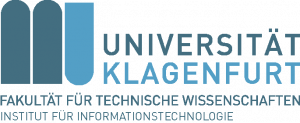[PDF]
Haichao Yao (Beijing Jiaotong University), Rongrong Ni (Beijing Jiaotong University), Hadi Amirpour (Alpen-Adria-Universität Klagenfurt), Christian Timmerer (Alpen-Adria-Universität Klagenfurt), Yao Zhao (Beijing Jiaotong University).
 Abstract: In general, manipulated videos will eventually undergo recompression. Video transcoding will occur when the standard of recompression is different from the prior standard. Therefore, as a special sign of recompression, video transcoding can also be considered evidence of forgery in video forensics. In this paper, we focus on the detection and localization of video transcoding from AVC to HEVC (AVC-HEVC). There are two probable cases of AVC-HEVC transcoding – whole video transcoding and partial frame transcoding. However, the existing forensic methods only consider the detection of whole video transcoding, and they do not consider partial frame transcoding localization. In view of this, we propose a framewise scheme based on a convolutional neural network. First, we analyze that the essential difference between AVC-HEVC and HEVC is reflected in the high-frequency components of decoded frames. Then, the partition and location information of prediction units (PUs) are introduced to generate frame-level PU maps to make full use of the local artifacts of PUs. Finally, taking the decoded frames and PU maps as inputs, a dual-path network including specific convolutional modules and an adaptive fusion module is proposed. Through it, the artifacts on a single frame can be better extracted, and the transcoded frames can be detected and localized. Coupled with a simple voting strategy, the results of whole transcoding detection can be easily obtained. A large number of experiments are conducted to verify the performances. The results show that the proposed scheme outperforms or rivals the state-of-the-art methods in AVC-HEVC transcoding detection and localization.
Abstract: In general, manipulated videos will eventually undergo recompression. Video transcoding will occur when the standard of recompression is different from the prior standard. Therefore, as a special sign of recompression, video transcoding can also be considered evidence of forgery in video forensics. In this paper, we focus on the detection and localization of video transcoding from AVC to HEVC (AVC-HEVC). There are two probable cases of AVC-HEVC transcoding – whole video transcoding and partial frame transcoding. However, the existing forensic methods only consider the detection of whole video transcoding, and they do not consider partial frame transcoding localization. In view of this, we propose a framewise scheme based on a convolutional neural network. First, we analyze that the essential difference between AVC-HEVC and HEVC is reflected in the high-frequency components of decoded frames. Then, the partition and location information of prediction units (PUs) are introduced to generate frame-level PU maps to make full use of the local artifacts of PUs. Finally, taking the decoded frames and PU maps as inputs, a dual-path network including specific convolutional modules and an adaptive fusion module is proposed. Through it, the artifacts on a single frame can be better extracted, and the transcoded frames can be detected and localized. Coupled with a simple voting strategy, the results of whole transcoding detection can be easily obtained. A large number of experiments are conducted to verify the performances. The results show that the proposed scheme outperforms or rivals the state-of-the-art methods in AVC-HEVC transcoding detection and localization.













